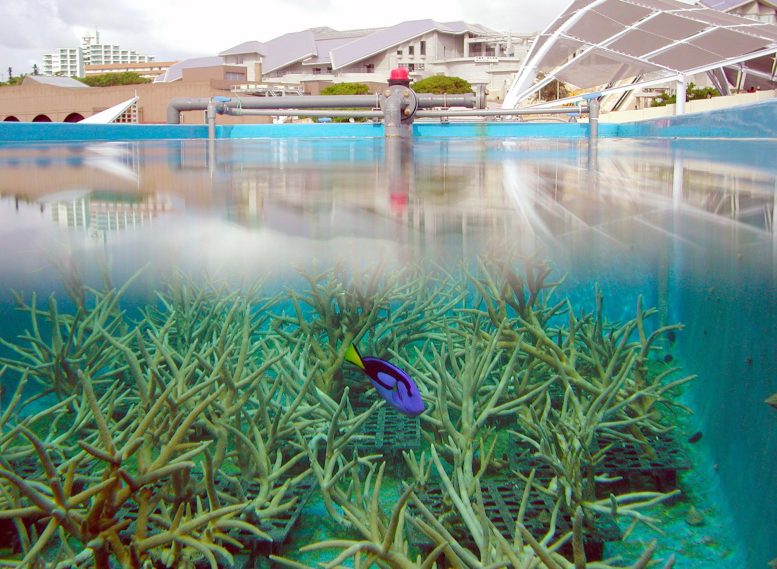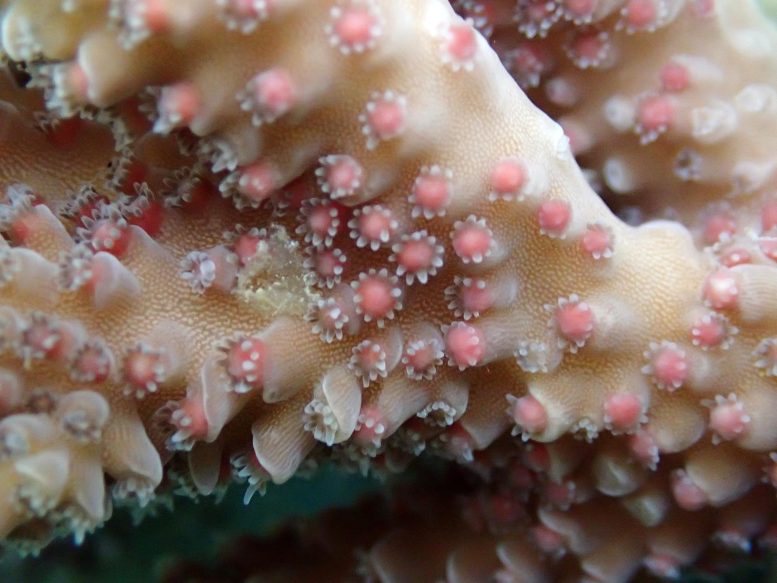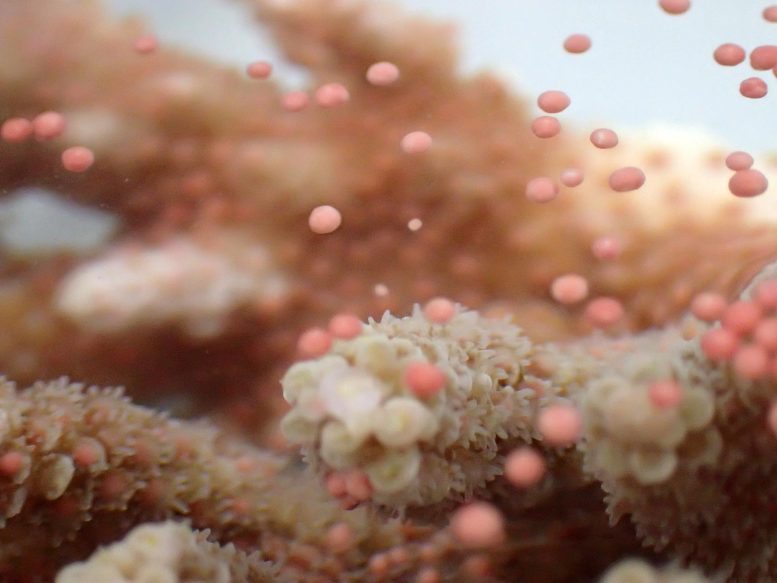
A new study utilizing aquarium data has uncovered the key factors that orchestrate mysterious synchronized coral spawning.
Corals play an essential role in ocean ecosystems, and like many organisms, they are under threat from climate change and other human activities. To better protect coral, it’s first necessary to understand them, in particular their reproductive life cycle, which only happens once a year.
For the first time, researchers have produced a model for coral spawning, based on various environmental factors. They achieved this by tapping an often overlooked source of aquatic knowledge, an aquarium.
Coral Biology and Reproduction
Given their branching shapes or waving tendrils, you would be forgiven for thinking of coral as the trees of the sea. But they are really colonies of small anemones, some of which form sturdy structures which are often the familiar shapes we see in reefs. As they are not plants, they don’t reproduce using seeds, but actually reproduce as animals do, with eggs and sperm. The way they do this, though, is mysterious and rare to see.

Insights From Coral Spawning Events
“Coral mass spawning, where corals release their eggs and sperm in synchronized bundles over several days following a full moon, is one of the most spectacular reproduction events in the world,” said Associate Professor Shinichiro Maruyama from the Department of Integrated Biosciences at the University of Tokyo.
“However, despite decades of studies, environmental drivers of the synchronous spawning remain unclear. Coral spawning data are very sparse; it’s usually only an annual event. Putting such sparse data into a model that can explain the overall pattern of spawning has been impossible, but we’ve finally found a way that works.”
Challenges in Coral Spawning Studies
Studying coral spawning directly in their natural habitat is theoretically possible but practically challenging. Researchers would need to install various types of robust environmental sensors around coral beds and dive daily to make observations. This is expensive, impractical, and risky, especially at night and in bad weather.
Maruyama and his team sought an alternative scenario and found one in the form of an aquarium, specifically the Okinawa Churaumi Aquarium.

Valuable Data From Aquariums
“The Okinawa Churaumi Aquarium had kept 15 years of coral spawning records for Acropora corals, a reef building coral commonly found in Japan’s southernmost prefecture Okinawa, but this data had not been used for this kind of research before,” said Maruyama.
“By collecting, interpreting and interrogating this data, we found that corals use multiple environmental inputs, like rainfall, solar radiation, and water temperature, to adjust their spawning timing and synchronize it to achieve a peak time for spawning. Water temperature seems to be the primary trigger to determine the annual window of opportunity.”
Future Research and Applications
This study leads to potential applications, such as more accurate coral spawning prediction and assessment of environmental changes that may affect coral reproduction. Understanding coral reproduction activities is crucial for maintaining coral reef ecosystems and protecting related marine life. But if aquariums can provide precious data that researchers cannot easily obtain through experiments and observations, why has this not been explored before?
“Aquariums are treasure troves of research resources with a wealth of untouched and valuable data. On the other hand, some scientists tend to think that they don’t truly reflect nature, and also that they are not as well organized as a laboratory. We were fascinated by that gap in recognition and the possibilities that had been hidden, overlooked, and sometimes neglected,” said Maruyama. “Here, we analyzed past data to make a model that fits that data. Next, we plan to produce a mathematical model to predict future spawning events in nature.”
Reference: “Long-term aquarium records delineate the synchronized spawning strategy of Acropora corals” by Yusuke Sakai, Hiromi H. Yamamoto and Shinichiro Maruyama, 1 May 2024, Royal Society Open Science.
DOI: 10.1098/rsos.240183